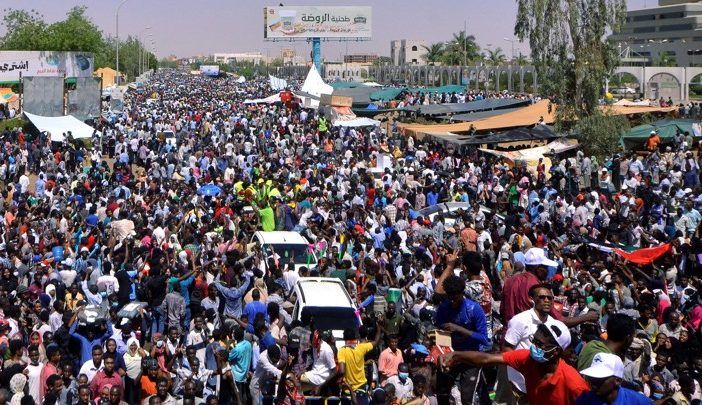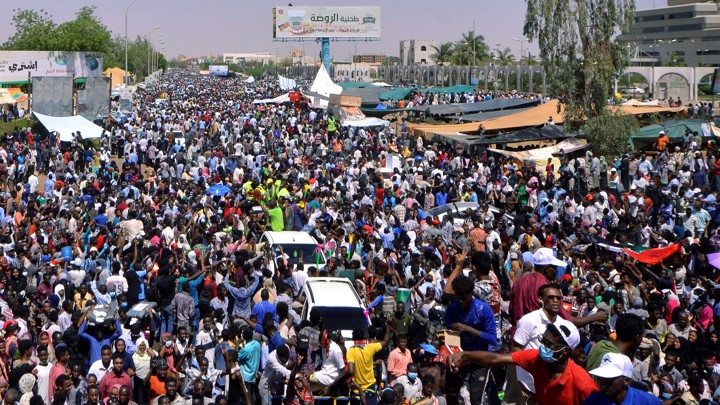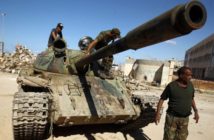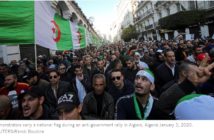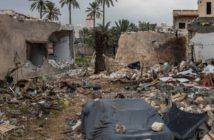The Atlatic
Isma’il Kushkush
The demonstrations have their own local characteristics, but there are several parallels.
Sudan’s protest movement appears to have learned lessons from the 2011 Arab Spring.REUTERS
A photograph has been floating around on social media recently featuring six Arab leaders at a summit meeting in 2010, all with red X marks on them. The first four, from left to right, were deposed during the Arab Spring in 2011: Tunisia’s Zine El Abidine Ben Ali, Yemen’s Ali Abdullah Saleh, Libya’s Muammar Qaddafi, and Egypt’s Hosni Mubarak.
The two on the far right—Algeria’s Abdelaziz Bouteflika and Sudan’s Omar al-Bashir—lasted longer, but it appears their day, too, has come.
Back in 2011, anything seemed possible. Tunisia’s strongman fell, and Egypt’s soon followed. Protests erupted in Bahrain, as well as in Libya, Syria, and Yemen (and, in the latter three, war soon followed). Four countries saw new governments, but in the end, meaningful change survived in Tunisia alone.
In Sudan and Algeria in 2011, some took to the streets to demand change, but in both cases, demonstrations were limited, and in Sudan, where I was working as a journalist at the time, they were crushed.
This time around, protesters have learned lessons of the past, from their own experiences and those of others in neighboring and nearby countries. Though it is still early and much could yet change, their efforts have delivered results: Bouteflika has resigned, and Bashir has been unseated by Sudan’s military.
Here’s how these protests are different from 2011:
BROADER APPEAL
For years, the work of opposing the Sudanese government had been undertaken by traditional political parties and rebel groups, who formed ever-changing alliances. In 2011, though, those who sought to ignite popular opposition to Bashir’s rule were mostly young activists and college students. Their domains were the country’s universities and upper-middle-class neighborhoods. Though their efforts were short lived—in a matter of weeks, they were defeated, with demonstrators arrested, tortured, or forced into exile—protests took place again in 2012 and 2013.
This year, the Sudanese Professionals Association, an independent trade union, took the lead. It may be composed of activists who belong to various political groups, but the appearance and appeal of an unaffiliated, nonideological body has been instrumental in mobilizing masses of people, reigniting the historically important role of trade unions in Sudanese politics. And the association is courting others, too. “We learned the importance of unity,” Sarah Abdeljalil, a spokesperson for the Sudanese Professionals Association, told me.
Young Sudanese women in particular have played a crucial role, and have been labeled kandakas, the title of the queens of ancient Sudan. In some ways, their participation reflects the country’s changing demographics, but it is also an effort to publicly reject what is widely perceived to be a submissive role for women in Sudanese society. The widely shared photograph of the activist Alaa Salah chanting while standing on top of a car, taken by Lana Haroun, has become the uprising’s iconic image.
Protesters have also taken inspiration from nationalist moments in their countries’ histories. For Algerians, that has meant looking at pro-democracy protests from 1988, along with a history of anti-colonial resistance. In Sudan, demonstrators point to examples of civic resistance, including a 1964 protest when students stood up to a military government, eventually overthrowing it, as well as a similar movement in 1985 that again ended army rule.
STAYING UNITED
When the protests first erupted, the Sudanese government initially accused Darfurian university-student activists of inciting violence, linking them to rebel groups connected to Israel. Sudanese protesters rejected that claim in what they saw as an age-old method to use ethnicity to deflect attention from real problems. “You Arrogant Racist, We Are All Darfur!” became a rallying cry in the capital, Khartoum, a city whose residents had long looked down on people from the conflict-wracked region.
In fact, the protesters in Sudan, whether or not they are affiliated with political groups, come from diverse backgrounds. It is telling that the initial rallies started outside Khartoum, beginning late last year in the northern town of Atbara in River Nile State, a traditional stronghold for Bashir, when high-school students saw that the price of bread had tripled. Other cities and villages soon joined.
“When the opposition comes from outside of the center, it really means people are fed up with the system,” the Egyptian human-rights advocate Abdelrahman Mansour, a youth leader during Egypt’s 2011 protests, told me.
DIGITALLY SAVVY
In Algeria and Sudan, like the Arab Spring protests, communications apps and social-media platforms such as Facebook, WhatsApp, and Twitter have been important for activists.
“The emergence of a politically and technologically savvy generation which has … been able to leverage its resources into a coherent and coordinated action” is what has helped Algerian organizers, the Algerian writer Hicham Yezza told me. A major difference this time in Sudan has been a recognition of the importance of digital security and bypassing government-imposed internet restrictions.
“Read and delete; use VPN so they can’t track you,” Abdeljalil told me, relating advice she received from young activists and protesters to stay safe online while organizing. “We learned the hard way.”
DON’T TRUST THE ARMY
To avoid an Egypt-like scenario, protesters in Algeria and Sudan have been wary of promises from the army. Demonstrations in Algeria have continued even after Bouteflika’s removal, as they have in Sudan with Bashir’s this past week. In Sudan, Abdeljalil said that protest organizers have plans for a civilian government that includes all political forces, including the army, “but they are not the leaders.”
Concerns about conflict breaking out in Sudan, in particular—a legitimate worry given the country’s size, location, and abundance of rebel groups and militias—have been dismissed by protest organizers there, who insist that they will not be dragged into armed face-offs with the military, as in Syria. They have emphasized the peaceful nature of the protests while simultaneously encouraging large numbers to take to the streets to avoid the fate of protesters in Cairo’s Rabaa Square, where hundreds were killed by the Egyptian military in 2013. “Peaceful! Peaceful!” has been one of the main chants during these latest Sudanese rallies.
Though protesters in both Sudan and Algeria have emphasized the local characteristics of their frustrations, and have been loath to be lumped into pan-Arab narratives, there are nevertheless parallels, and lessons that have been learned. Many see this as a “late Arab Spring,” Mansour, the Egyptian activist, said. “They understood the conclusion of what happened in the Arab Spring in the first wave,” he added.
We want to hear what you think about this article. Submit a letter to the editor or write to letters@theatlantic.com.
Isma’il Kushkush is a journalist based in New York City who has contributed to The New York Times, CNN, Aljazeera English, the Associated Press, Reuters, Guernica and others.




